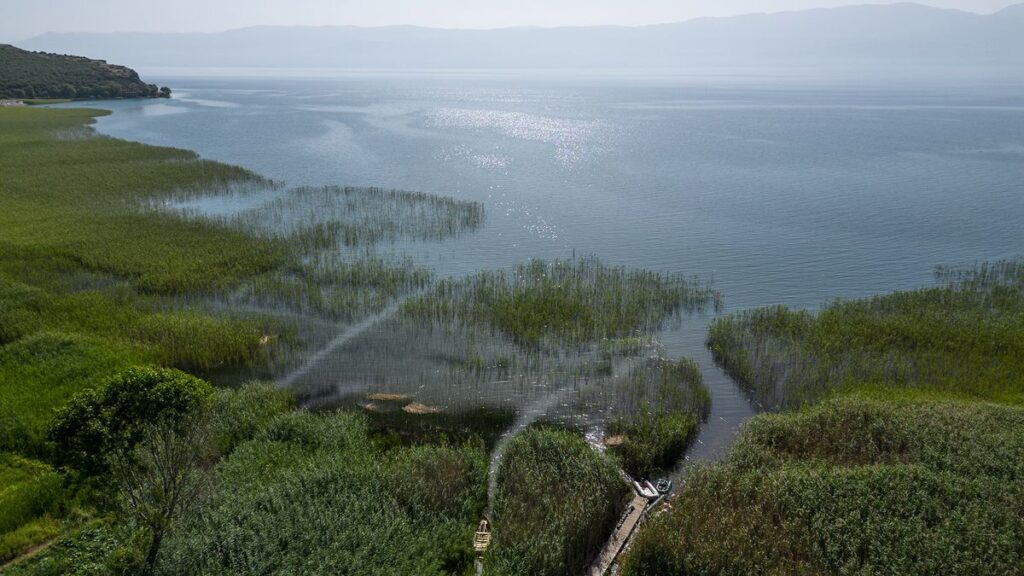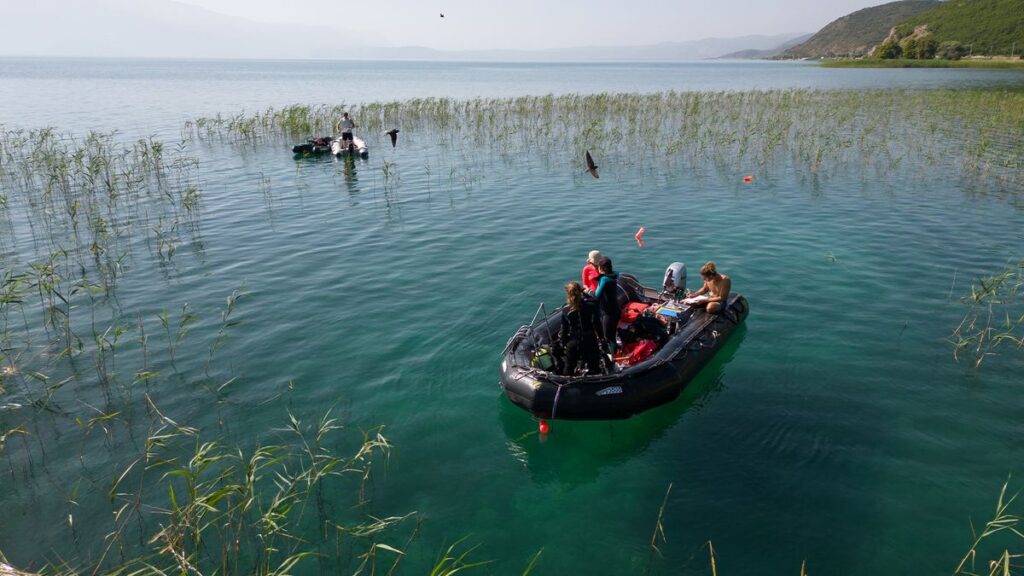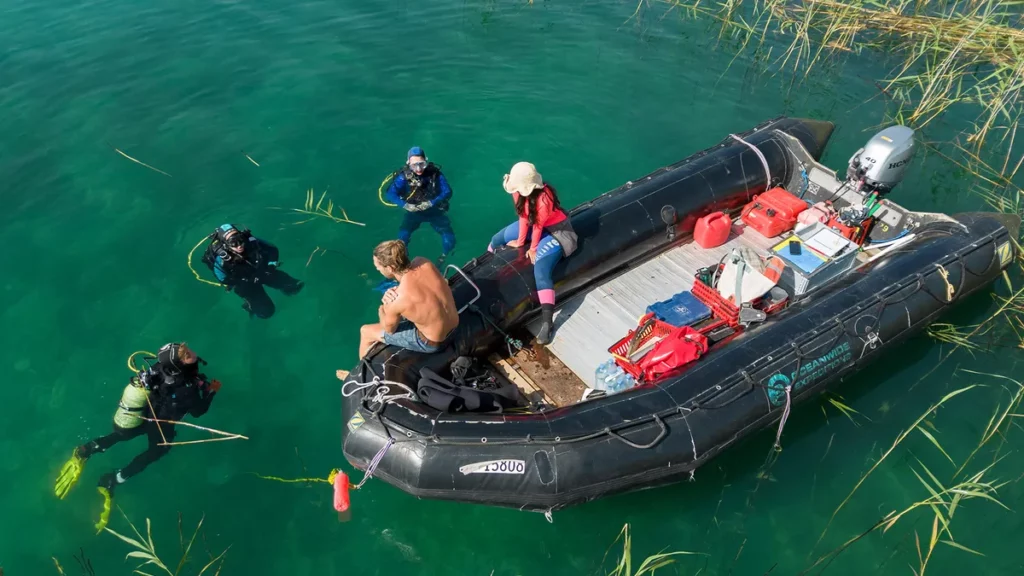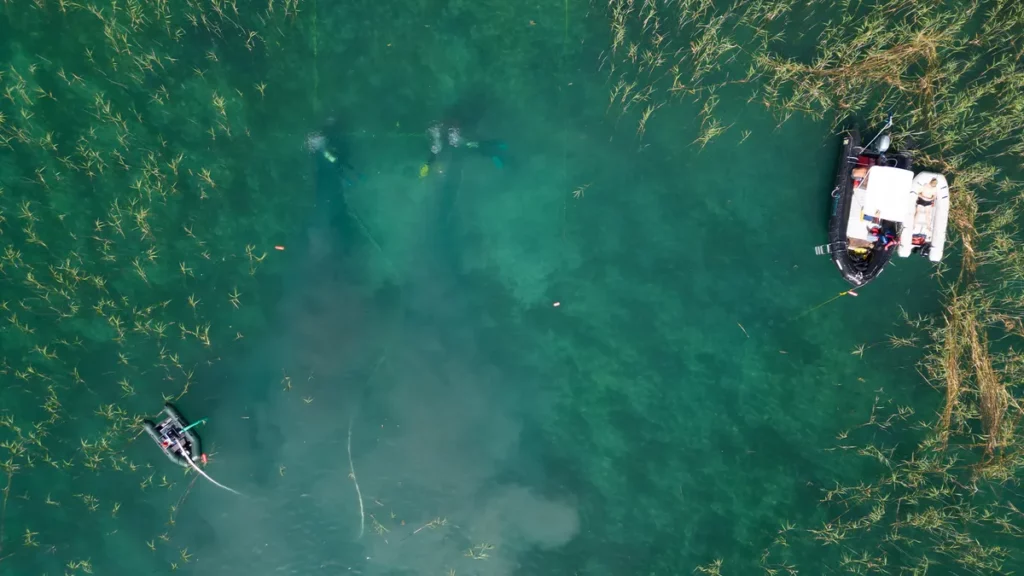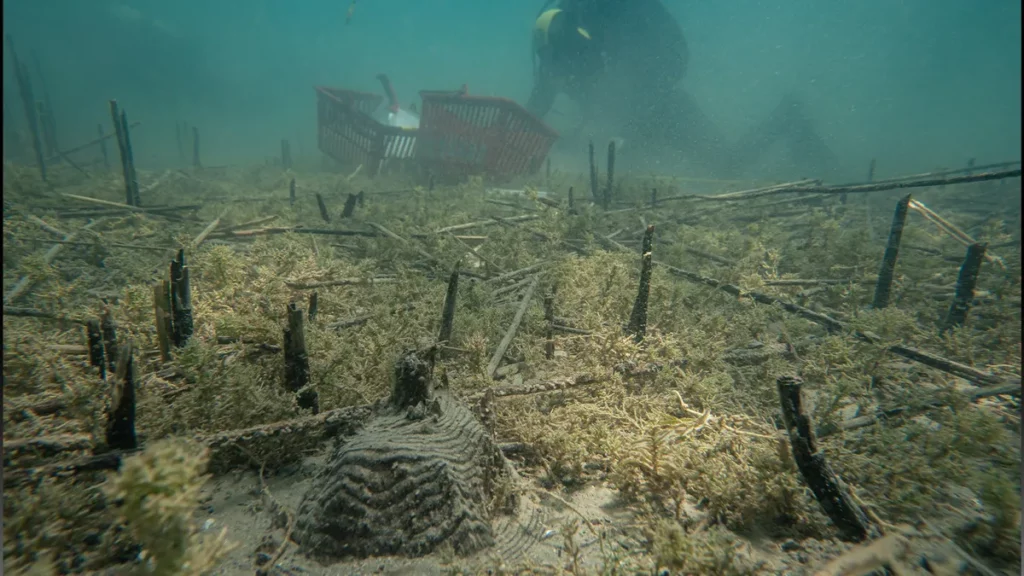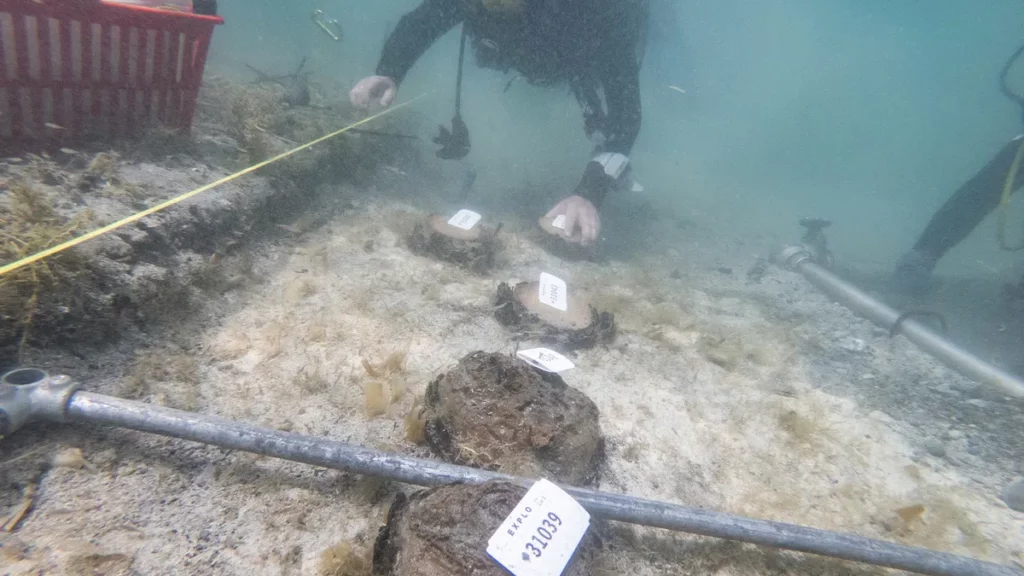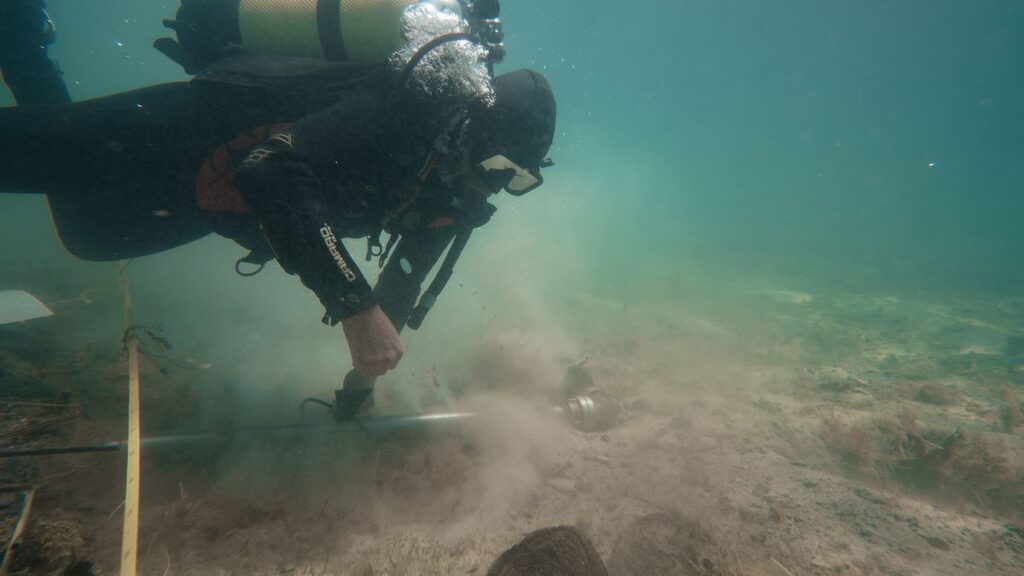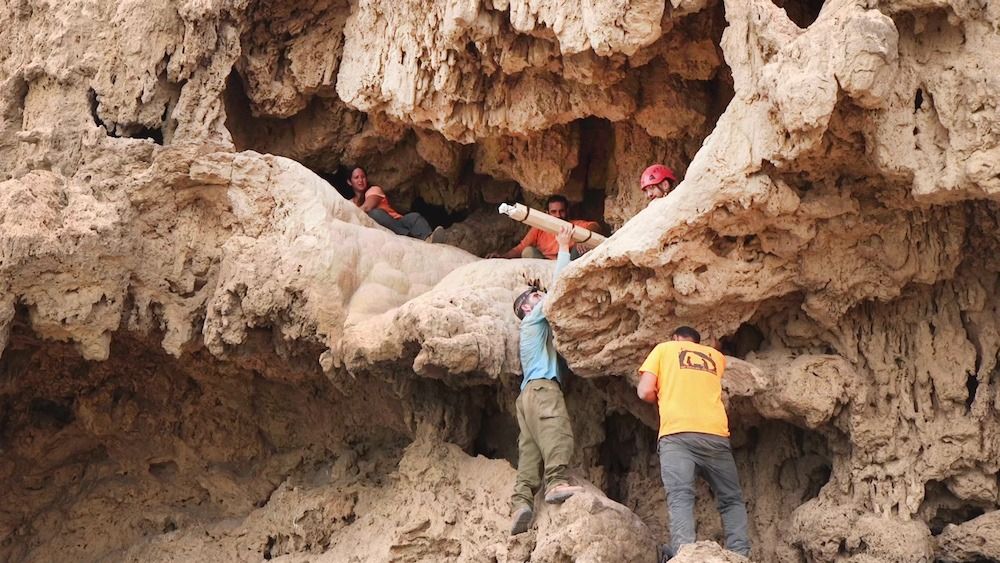This Is One Of The Oldest Pieces Of Cloth In The World And It’s Made Of Bast Fibers!
Archaeological discoveries provide us with vital information about the daily life of our ancestors. What did ancient people eat and drink, and what kind of clothes did they wear? These are some of the many questions occupying the minds of those interested in ancient history.
Scientists have discovered incredible textiles that have survived for thousands of years and can now be analyzed with the help of modern technology.

At La Marmotta near Rome, Italy, underwater archaeologists found rare and well-preserved cloth fragments produced by people more than 8,000 years ago. Scientists are especially impressed with four extraordinary small textile fragments that researchers at the University of Copenhagen are currently analyzing. The Neolithic textiles were most likely made of plant fibers.
While excavating at Giza, Egypt, archaeologists discovered the only complete ancient Egyptian bead-net dress found to date in one of the tombs!
The 4,500-year-old dress was comprised of “several thousand faience beads divided among thirty small, rounds boxes of varied sizes, none larger than five inches in diameter.”
“This individual was wrapped, each limb individually, to simulate a living person, and covering her was the front half of a narrow V-necked sheath. Our final bead-net reconstruction produced, therefore, not a shroud-like mummy covering, but rather a dress that simulated a garment actually worn in life,” Millicent Jick at the Museum of Fine Arts in Boston said.
Another incredible Egyptian discovery is the Tarkhan Dress, a V-neck linen shirt that has been confirmed as the world’s oldest woven garment, with radiocarbon testing dating the garment to the late fourth millennium B.C.
Glacial archaeologists have also successfully recovered amazing clothes and shoes that have been buried under the ice in Norway for a very long time. At the Lendbreen, a pass high in the Norwegian mountains, scientists found two complete pieces of clothing. One of them is a 1,700-year-old tunic.
The Lendbreen tunic is Norway’s oldest piece of clothing, and despite being hidden beneath the snow for so many years, it’s still very well-preserved.
One of the world’s oldest pieces of cloth was unearthed in Çatalhöyük, Turkey. This archaeological discovery of Stone Age textiles sheds new light on the history of clothes making.
Çatalhöyük, is the world’s largest known Stone Age settlement and one of the most famous archaeological sites. As many as 10,000 people lived in Çatalhöyük in Turkey some 8,000-9,000 years ago. This makes it the largest known settlement from what archaeologists call the Neolithic and Chalcolithic periods.
Ever since the first discovery of pieces of cloth unearthed at the site, experts have been discussing what kind of clothes people wore in Çatalhöyük. Some specialists believed that people made their clothes from wool. Others thought they made them out of linen instead. So who’s right? Neither, actually.
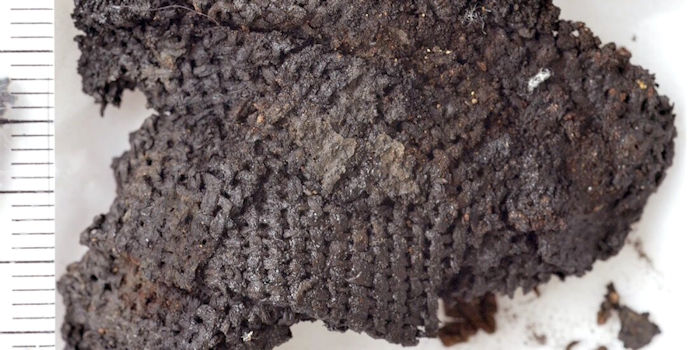
As explained by Bender Jørgensen, a specialist in archaeological textiles and Professor emerita from NTNU’s Department of Historical and Classical Studies, “In the past, researchers largely neglected the possibility that the fabric fibers could be anything other than wool or linen, but lately another material has received more attention.”
People in Çatalhöyük used assorted varieties of exactly this material.
“Bast fibers were used for thousands of years to make rope, thread, and in turn also yarn and cloth,” says Bender Jørgensen.
As it turns out, people in this area did not import linen from elsewhere, as many researchers have previously thought, but used the resources they had plentiful access to.
Bender Jørgensen notes that a lot of people often overlook bast fiber as an early material. “Linen tends to dominate the discussion about the types of fabric fibers people used,” she says.
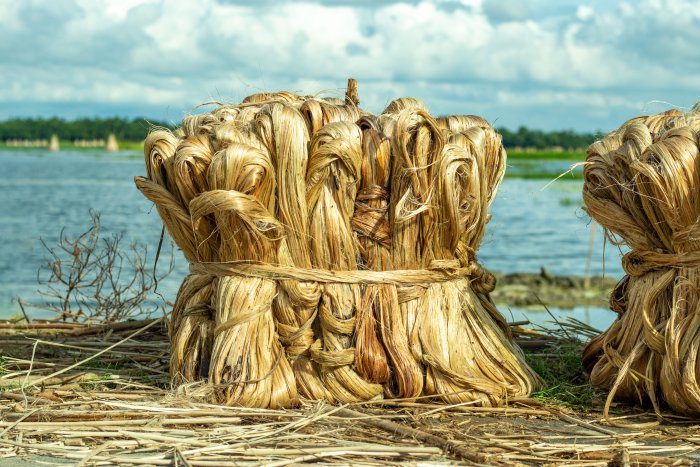
Ancient civilizations were resourceful and highly creative. Producing textiles made of bast fibers had several advantages. Bast fiber is found between the bark and the wood in trees such as willow, oak, or linden. The people from Catalhöyük used oak bark and thus fashioned their clothes from the bark of trees that they found in their surroundings.
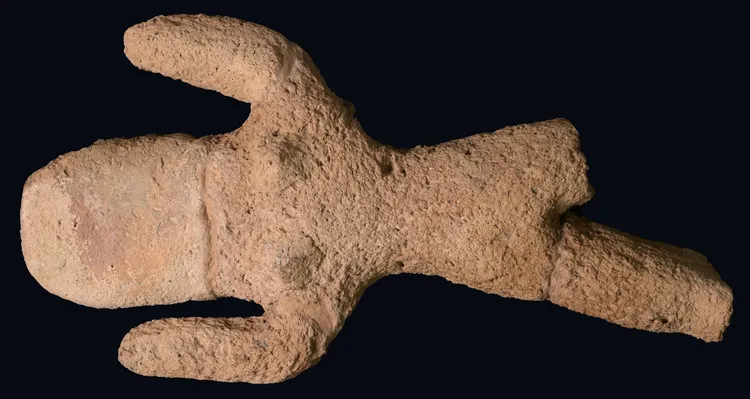
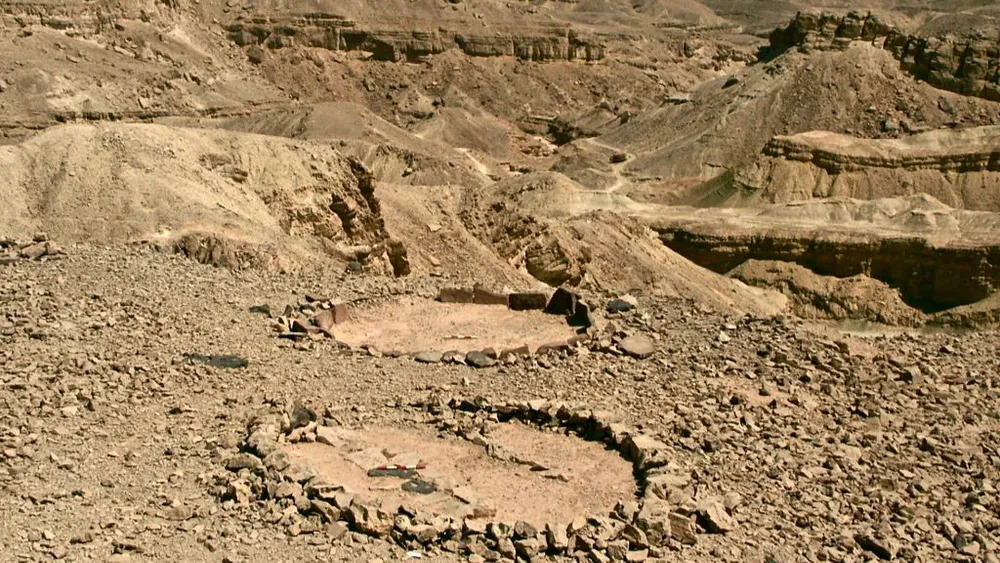


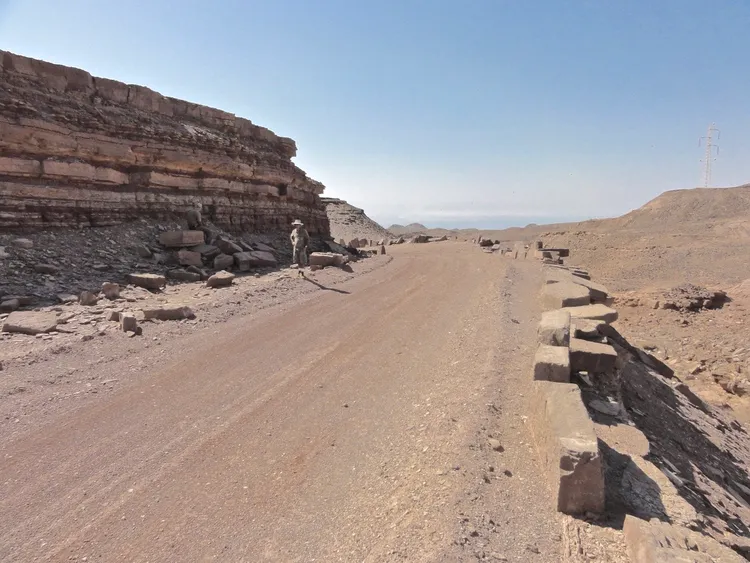
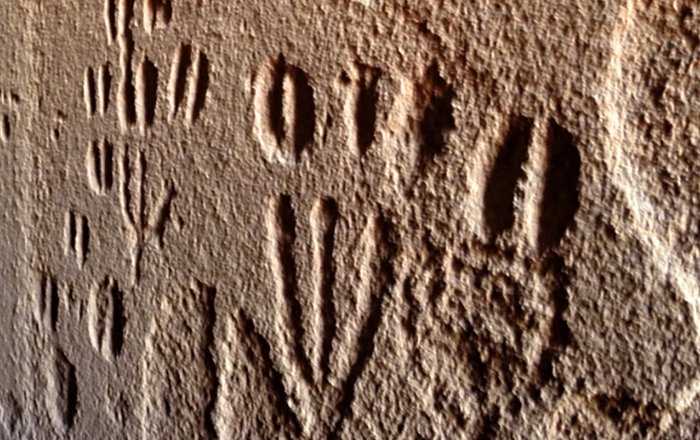





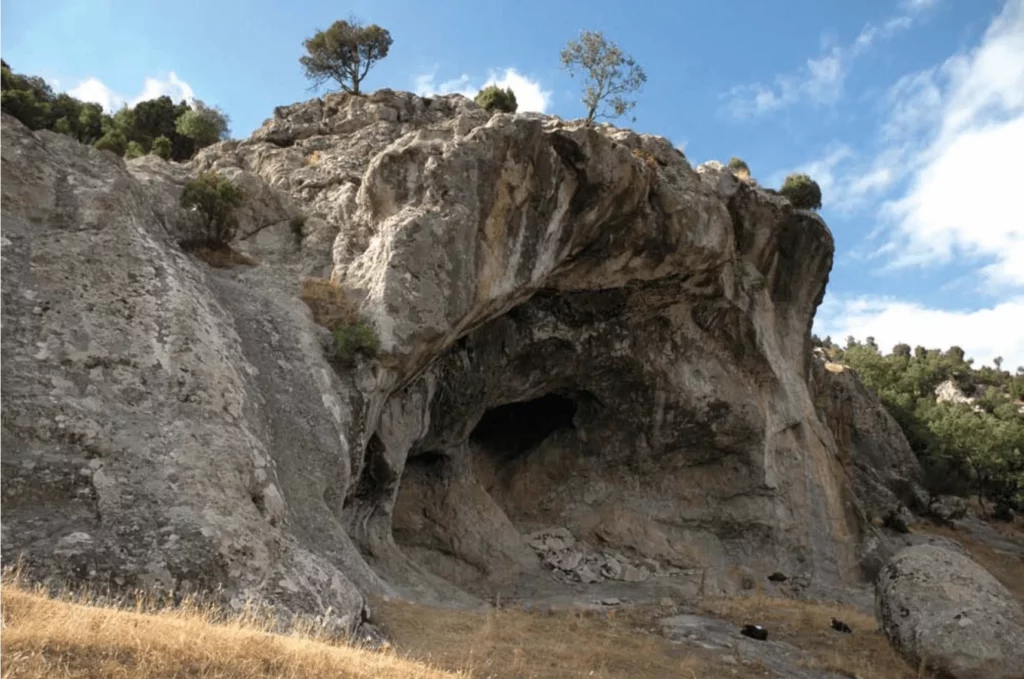
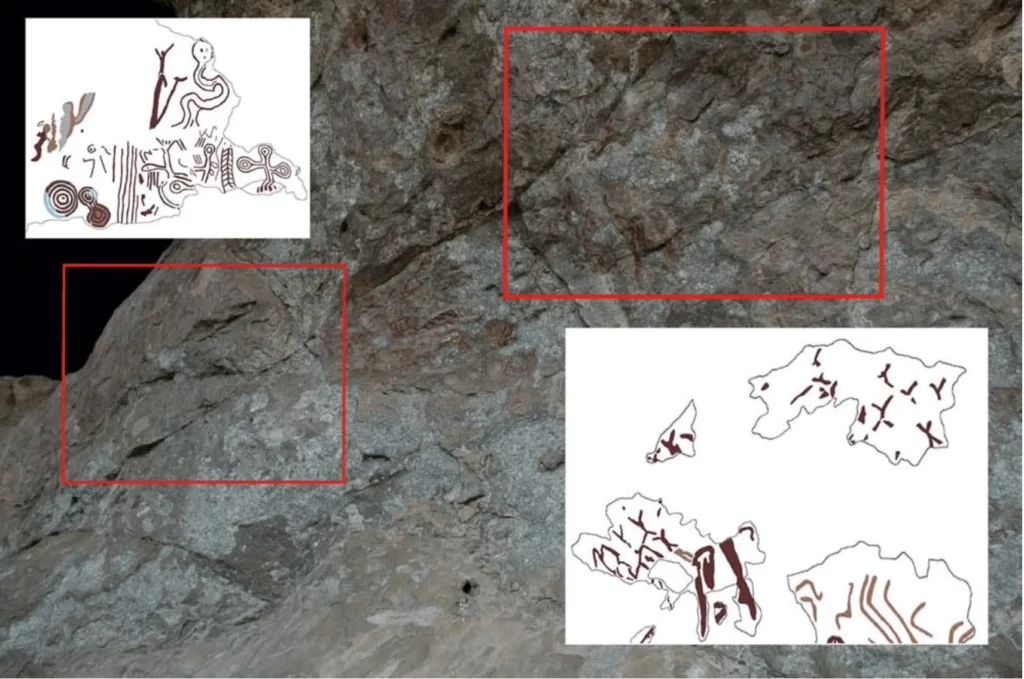
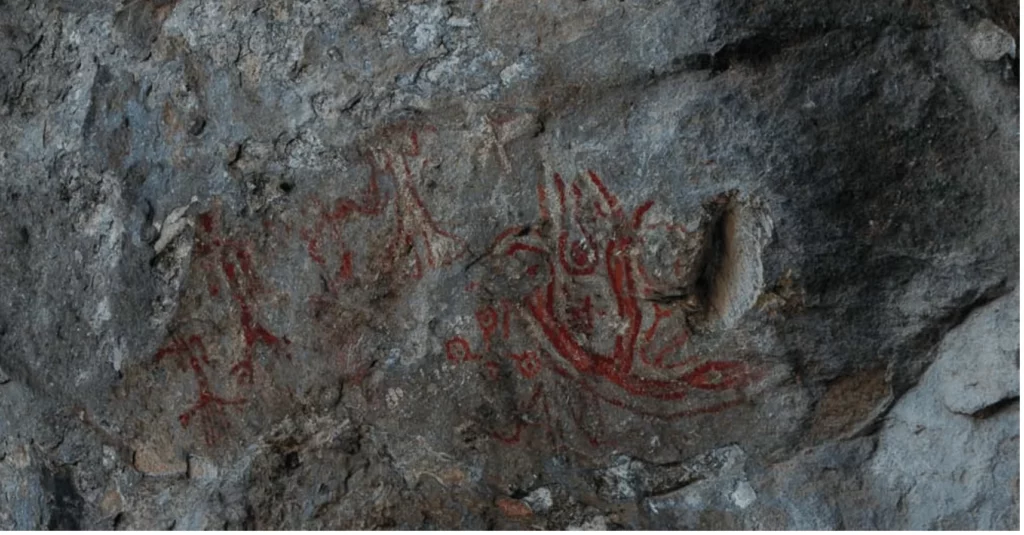
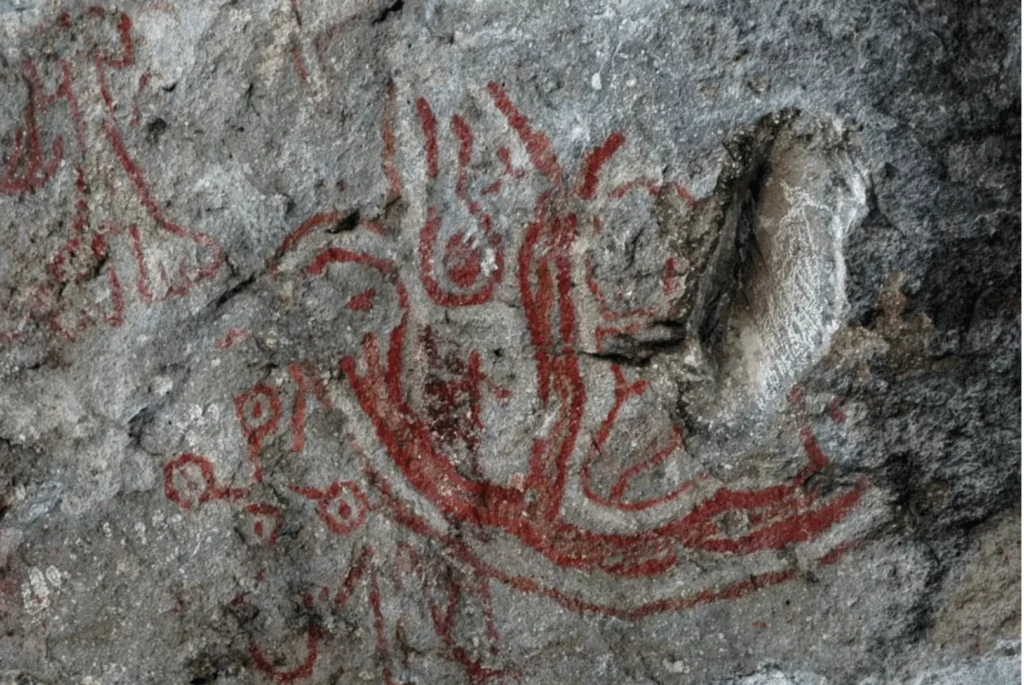


![Europe's oldest known village teetered on stilts over a Balkan lake 8,000 years ago Archaeologists in the Balkans have discovered the likely remains of an 8,000-year-old village built out over an ancient lake — the earliest-known village of any kind in Europe. The lake, located on the border between Albania and North Macedonia, holds hundreds of tree-trunk stilts that the archaeologists believe formed the foundations of the prehistoric village. The researchers can't yet estimate the settlement's original size — but their discovery of a defensive palisade of tens of thousands of wooden spikes, now underwater, indicates the village was relatively large. Albert Hafner, an archaeologist at the University of Bern in Switzerland who led the excavations, told Live Science that divers sampled wood from the submerged tree trunks and wooden spikes near the Albanian village of Lin on the western shore of Lake Ohrid a few weeks ago. The results of dating tests won't be available for months. But Hafner said the submerged wood is probably the same age as wooden foundations unearthed on the shore, which his team determined date from between 5800 B.C. and 5900 B.C. This would mean it's the oldest settlement archaeologists have found anywhere in Europe, he said. Hafner's team also found evidence of similar "pile dwellings" built over the water at the underwater prehistoric site of Ploča Mičov Grad on the eastern shore of the lake — part of North Macedonia — but those remains date to a few hundred years later. It now seems both villages were built on opposite sides of the lake in phases over hundreds of years, and that the later building phases had obscured the earliest, he said. "It seems to be quite typical that we have multiple phases of settlements, with sometimes long gaps in between," he said. "It now looks like Lin dates mostly from the sixth millennium [B.C.] in several phases, starting in about 5900 and ending in 5000." First farmers Hafner has led the EXPLO project for several years, examining lakes in the Balkans for traces of settlers from Anatolia — now Turkey — to Europe about 8,000 years ago. They are thought to be the first people to bring farming to Europe from around Mesopotamia. The early farmers interbred with hunter-gatherers who had already occupied Europe since about 45,000 years ago during the Upper Palaeolithic period, and who probably arrived from Africa via the eastern shores of the Mediterranean. And both ancestries interbred with nomadic proto-Indo-European peoples like the Yamnaya, who arrived in Europe from the Eurasian Steppe about 5,000 years ago. Most modern Europeans show a genetic mix of all three ancestries. Hafner explained that the many large lakes in the Balkans region held clear traces of the early migration from Anatolia. Lake dwellers Hafner's team has so far investigated more than half a dozen sites across the Balkans. Research into some of the lake settlements was conducted in the 1960s. But the latest excavations use refined techniques like very accurate radiocarbon dating and dendrochronology, which can determine when logs of wood were felled by looking at tree growth rings, Hafner said. Most of the former piles and stilts underwater near Lin are now covered by silt, but a few protrude from the lake floor. And archaeologists are unsure if the settlement was built in deep water or above mostly marshy ground. Ancient people were likely drawn to the lakes because of water and plants there. But exactly why prehistoric people chose to build their houses on piles or stilts above a lake or wetland isn't clear — though the practice is seen throughout Europe, from the Balkans to the Baltic. Hafner thinks that under normal conditions, it would have been easy to get between houses with dugout canoes. But the large palisade of wooden spikes indicates the village was sometimes attacked, he said; and houses on the water were more easily defended (although perhaps not always successfully).](https://archaeology-world.com/wp-content/uploads/2023/09/Balkan-lake-1.1-1038x576.webp)
![Europe's oldest known village teetered on stilts over a Balkan lake 8,000 years ago Archaeologists in the Balkans have discovered the likely remains of an 8,000-year-old village built out over an ancient lake — the earliest-known village of any kind in Europe. The lake, located on the border between Albania and North Macedonia, holds hundreds of tree-trunk stilts that the archaeologists believe formed the foundations of the prehistoric village. The researchers can't yet estimate the settlement's original size — but their discovery of a defensive palisade of tens of thousands of wooden spikes, now underwater, indicates the village was relatively large. Albert Hafner, an archaeologist at the University of Bern in Switzerland who led the excavations, told Live Science that divers sampled wood from the submerged tree trunks and wooden spikes near the Albanian village of Lin on the western shore of Lake Ohrid a few weeks ago. The results of dating tests won't be available for months. But Hafner said the submerged wood is probably the same age as wooden foundations unearthed on the shore, which his team determined date from between 5800 B.C. and 5900 B.C. This would mean it's the oldest settlement archaeologists have found anywhere in Europe, he said. Hafner's team also found evidence of similar "pile dwellings" built over the water at the underwater prehistoric site of Ploča Mičov Grad on the eastern shore of the lake — part of North Macedonia — but those remains date to a few hundred years later. It now seems both villages were built on opposite sides of the lake in phases over hundreds of years, and that the later building phases had obscured the earliest, he said. "It seems to be quite typical that we have multiple phases of settlements, with sometimes long gaps in between," he said. "It now looks like Lin dates mostly from the sixth millennium [B.C.] in several phases, starting in about 5900 and ending in 5000." First farmers Hafner has led the EXPLO project for several years, examining lakes in the Balkans for traces of settlers from Anatolia — now Turkey — to Europe about 8,000 years ago. They are thought to be the first people to bring farming to Europe from around Mesopotamia. The early farmers interbred with hunter-gatherers who had already occupied Europe since about 45,000 years ago during the Upper Palaeolithic period, and who probably arrived from Africa via the eastern shores of the Mediterranean. And both ancestries interbred with nomadic proto-Indo-European peoples like the Yamnaya, who arrived in Europe from the Eurasian Steppe about 5,000 years ago. Most modern Europeans show a genetic mix of all three ancestries. Hafner explained that the many large lakes in the Balkans region held clear traces of the early migration from Anatolia. Lake dwellers Hafner's team has so far investigated more than half a dozen sites across the Balkans. Research into some of the lake settlements was conducted in the 1960s. But the latest excavations use refined techniques like very accurate radiocarbon dating and dendrochronology, which can determine when logs of wood were felled by looking at tree growth rings, Hafner said. Most of the former piles and stilts underwater near Lin are now covered by silt, but a few protrude from the lake floor. And archaeologists are unsure if the settlement was built in deep water or above mostly marshy ground. Ancient people were likely drawn to the lakes because of water and plants there. But exactly why prehistoric people chose to build their houses on piles or stilts above a lake or wetland isn't clear — though the practice is seen throughout Europe, from the Balkans to the Baltic. Hafner thinks that under normal conditions, it would have been easy to get between houses with dugout canoes. But the large palisade of wooden spikes indicates the village was sometimes attacked, he said; and houses on the water were more easily defended (although perhaps not always successfully).](https://archaeology-world.com/wp-content/uploads/2023/09/Balkan-lake-1.1-1024x576.webp)
